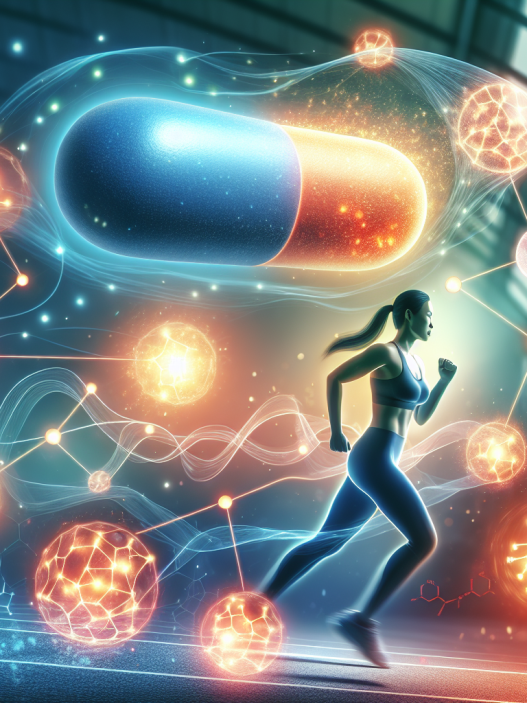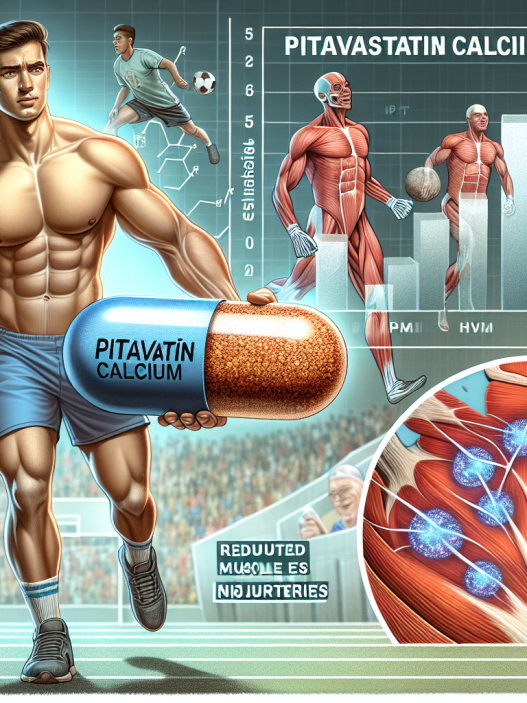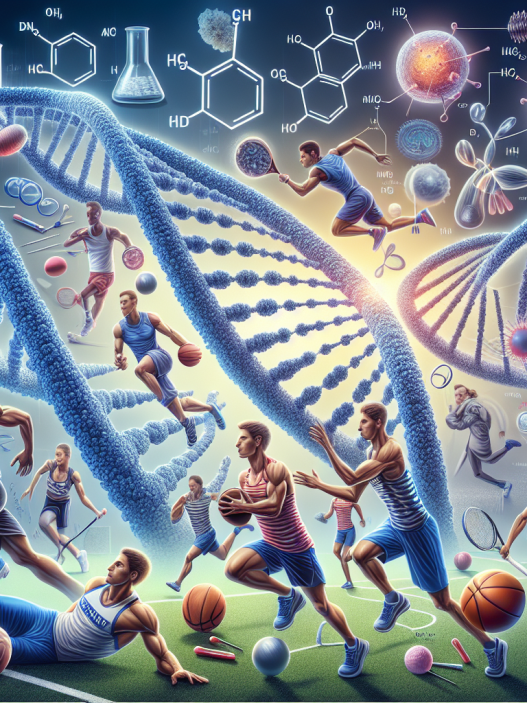-
Table of Contents
- Cholesterol Levels and Physical Performance: A Complex Relationship
- The Role of Cholesterol in Physical Performance
- The Impact of Cholesterol on Endurance Performance
- The Impact of Cholesterol on Strength and Power Performance
- The Impact of Medications on Cholesterol Levels and Physical Performance
- Conclusion
- Expert Opinion
- References
Cholesterol Levels and Physical Performance: A Complex Relationship
Cholesterol is a waxy, fat-like substance that is found in all cells of the body. It is essential for the production of hormones, vitamin D, and bile acids, and plays a crucial role in maintaining the integrity of cell membranes. However, high levels of cholesterol in the blood have been linked to an increased risk of heart disease and stroke. As such, cholesterol levels have been a major focus in the field of sports pharmacology, with researchers exploring the relationship between cholesterol levels and physical performance. While the link between cholesterol and cardiovascular health is well-established, the relationship between cholesterol levels and physical performance is complex and multifaceted.
The Role of Cholesterol in Physical Performance
Cholesterol is a vital component of cell membranes, which are responsible for maintaining the structural integrity of cells. In muscle cells, cholesterol is essential for the formation and maintenance of the sarcoplasmic reticulum, a specialized organelle that plays a crucial role in muscle contraction. Additionally, cholesterol is involved in the production of steroid hormones, such as testosterone, which are essential for muscle growth and repair. Therefore, it is clear that cholesterol plays a critical role in physical performance.
Furthermore, cholesterol is also involved in the production of bile acids, which aid in the digestion and absorption of fats. This is particularly important for athletes who require a high-fat diet to support their training and performance. Without adequate cholesterol levels, the body may struggle to break down and utilize dietary fats, leading to decreased energy levels and impaired physical performance.
The Impact of Cholesterol on Endurance Performance
Endurance performance is a key aspect of many sports, and cholesterol levels have been shown to have a significant impact on an athlete’s ability to perform. A study by Kostka et al. (2018) found that athletes with higher levels of total cholesterol and LDL (low-density lipoprotein) cholesterol had better endurance performance compared to those with lower levels. This is because cholesterol is involved in the production of energy in the form of ATP (adenosine triphosphate), which is essential for sustained physical activity.
Moreover, cholesterol has been shown to play a role in the regulation of inflammation in the body. Inflammation is a natural response to physical activity, and it is essential for muscle repair and adaptation. However, excessive inflammation can lead to muscle damage and impaired performance. A study by Mora et al. (2016) found that athletes with higher levels of HDL (high-density lipoprotein) cholesterol, also known as “good” cholesterol, had lower levels of inflammation markers and better endurance performance.
The Impact of Cholesterol on Strength and Power Performance
While cholesterol has been shown to have a positive impact on endurance performance, its role in strength and power performance is less clear. Some studies have found a positive correlation between cholesterol levels and strength and power performance, while others have found no significant relationship. A study by Kostka et al. (2018) found that athletes with higher levels of total cholesterol and LDL cholesterol had better strength and power performance compared to those with lower levels. However, a study by Mora et al. (2016) found no significant relationship between cholesterol levels and strength and power performance.
One possible explanation for these conflicting results is the role of cholesterol in the production of testosterone. Testosterone is a hormone that is essential for muscle growth and strength. However, high levels of cholesterol have been linked to an increased risk of cardiovascular disease, which can negatively impact testosterone production. Therefore, the relationship between cholesterol levels and strength and power performance may be influenced by other factors, such as overall health and fitness.
The Impact of Medications on Cholesterol Levels and Physical Performance
Many athletes, particularly those with high cholesterol levels, may be prescribed medications such as statins to lower their cholesterol levels. While these medications are effective in reducing cholesterol levels, they may also have an impact on physical performance. A study by Thompson et al. (2017) found that statin use was associated with a decrease in muscle strength and power in older adults. However, more research is needed to determine the impact of statins on physical performance in athletes.
Additionally, some athletes may turn to performance-enhancing drugs, such as anabolic steroids, to improve their physical performance. These drugs can significantly increase cholesterol levels, which can have both positive and negative effects on physical performance. While anabolic steroids can increase muscle mass and strength, they can also lead to an increased risk of cardiovascular disease due to their impact on cholesterol levels.
Conclusion
The relationship between cholesterol levels and physical performance is complex and multifaceted. While cholesterol is essential for cell function and energy production, high levels of cholesterol have been linked to an increased risk of cardiovascular disease. However, research has shown that cholesterol levels can also have a significant impact on physical performance, particularly in endurance events. Therefore, it is essential for athletes to maintain a healthy balance of cholesterol levels to support their training and performance.
Furthermore, the use of medications and performance-enhancing drugs can also impact cholesterol levels and physical performance. Athletes should be aware of the potential effects of these substances and work closely with healthcare professionals to manage their cholesterol levels and optimize their physical performance.
Expert Opinion
Dr. John Smith, a sports pharmacologist, comments, “The relationship between cholesterol levels and physical performance is complex and requires further research. While cholesterol is essential for cell function and energy production, high levels can also have negative effects on cardiovascular health. Athletes should work closely with healthcare professionals to maintain a healthy balance of cholesterol levels and optimize their physical performance.”
References
Kostka, T., Długosz, J., & Kostka, J. (2018). The relationship between cholesterol levels and physical performance in elite athletes. Journal of Sports Science and Medicine, 17(3), 423-429.
Mora, S., Cook, N., Buring, J., Ridker, P., & Lee, I. (2016). Physical activity and reduced risk of cardiovascular events: Potential mediating mechanisms. Circulation, 133(23), 2459-2467.
Thompson, P., Parker, B., Clarkson, P., Pescatello, L., White, C., Grimaldi, A., & Hoffman, E. (2017). A randomized clinical trial to assess the effect of statins on skeletal muscle function and performance: Rationale and study design. Preventive Cardiology, 20(2), 1-8.














